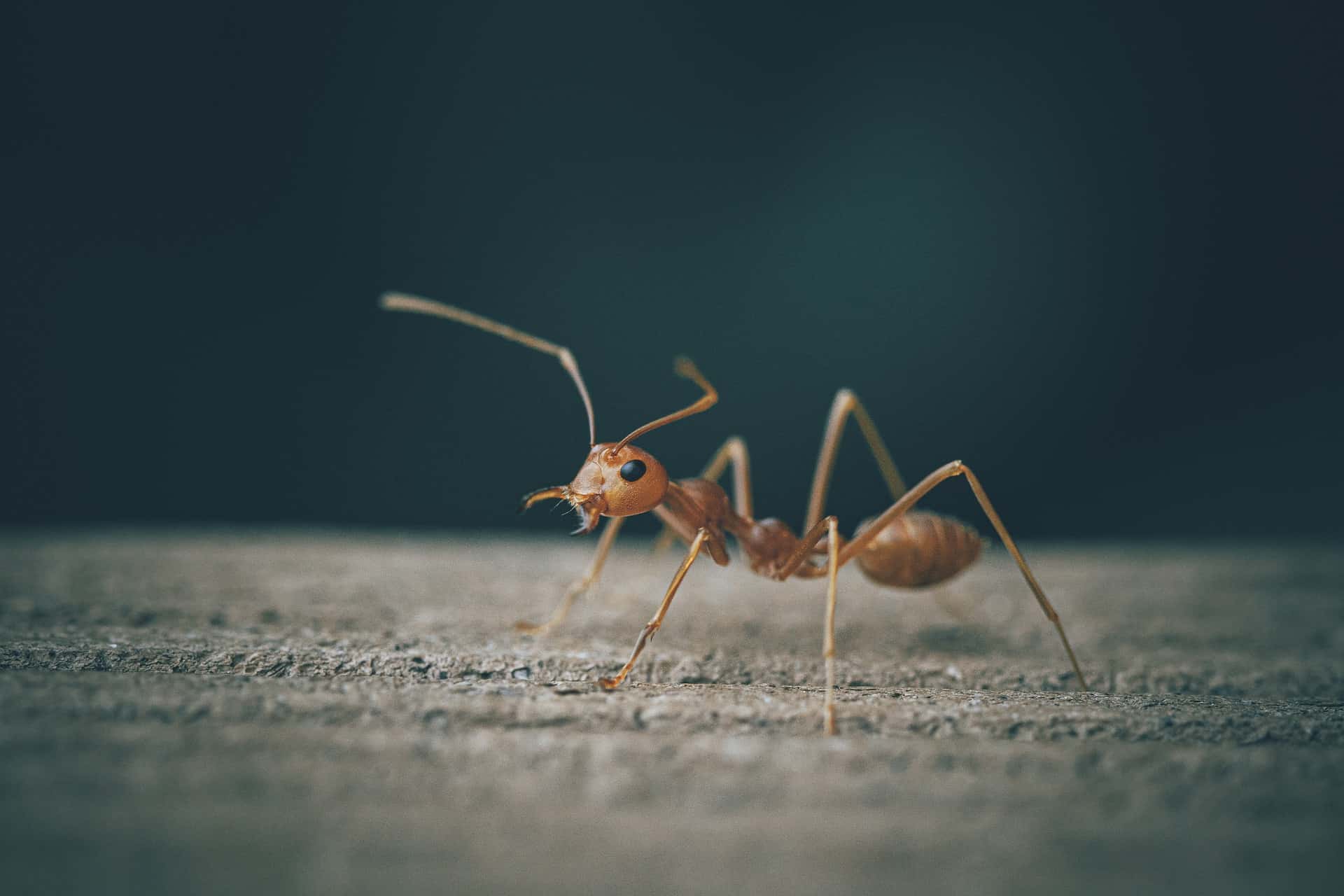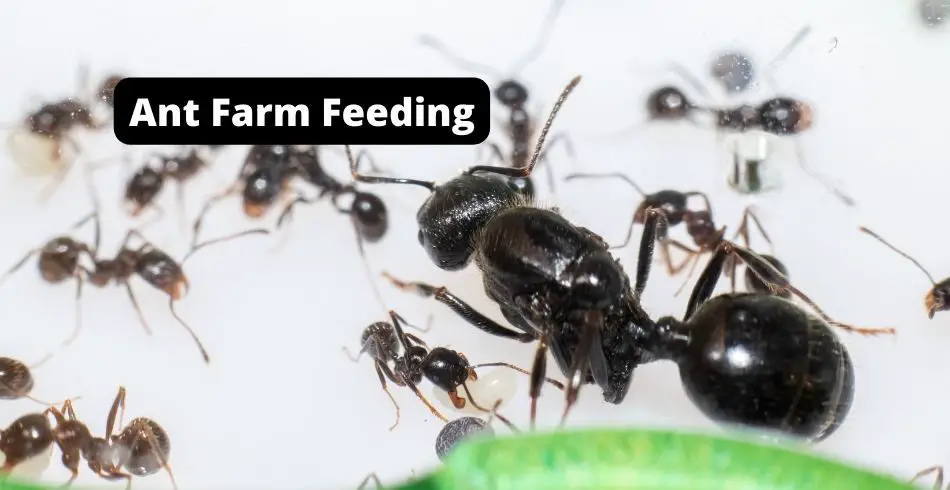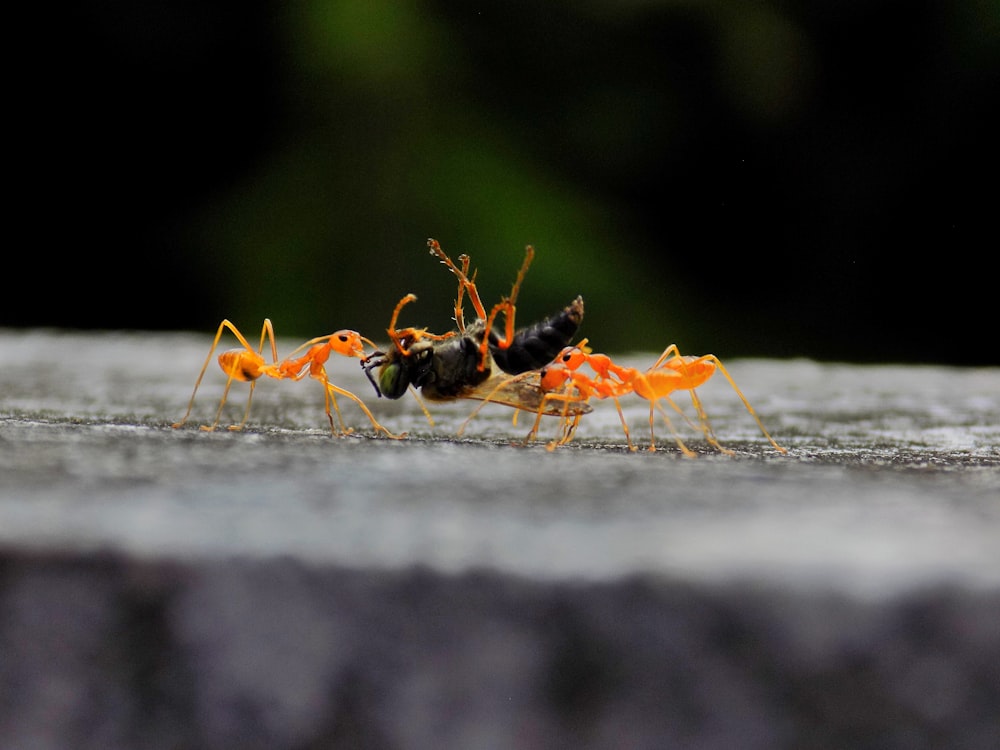Seeing an ant colony expand day by day is exciting. These tiny creatures surprise us with their social organization and dedication to their roles. If you own an ant colony or plan to create your ant farm, you will experience a unique feeling of satisfaction. You must be wondering what you should feed them.
Some of our favorite ant farm foods are bugs, fruit, honey, liquid carbohydrates with water in a cotton ball, sugar water, and meats (both dead and alive). You can feed your ants soft-bodied insects, or they will eat seeds if they’re harvester ants.
The most important thing in feeding your ants is consistency, current colony development, and timing.
Depending on your specific ant species, your ants will eat regularly.
While sometimes it is confusing to choose the right food, sticking to the basics will allow you to soon have a thriving ant farm.
Everyone wants pet ants or a successful ant farm, but nobody wants to feed their ants the wrong food.
We will go over a natural diet for your ants that will keep your ants full, healthy, and hydrated.
This is key, as the queen ant will be able to produce healthy young work worker ants.
Having the correct diet for your ants significantly impacts the colony’s growth.
According to popular belief, Ants are thought to eat everything!
This is true to a certain level, but if we want to develop an ant colony, we should consider their diet – the right way.
Ants, by their nature (and in nature), are predators and will go out and find whatever food they want.
Different species like to eat many different things, and no two ant colonies are alike.

Some like to hunt for food, and others like to hide seeds!
It is essential to feed your ants according to their specific preferences.
Read on, and we hope to clear up some misconceptions about giving your ants their food.
What Do Ants Eat and Drink?
Ants are predatory and will eat anything they catch. They prefer foods like bugs, fruit, honey, liquid carbohydrates, sugar water, seeds, and meats (both dead and alive). Ants mostly drink water but will not skip carbonated drinks with sugar.
Why Do Ants Need Protein?
Protein is an essential nutrient that serves many different functions in the bodies of all creatures.
Protein consumption is the base layer in creating an ant colony and your ant farm.
In preparation for laying eggs and larvae, the Queen Ant gobbles up proteins.
Queen ants need protein to reproduce.
Proteins are the building blocks of the whole reproductive process in an ant colony.
Larvae need protein to grow stronger, allowing them to survive when they are young and susceptible to predators and sickness.
Adult ants do not grow; they do not feed on protein**.
Your Ants will need a generous amount of protein for development and expansion.
Yet, some species have preferences for other types of foods.
There are many options for meeting your ant colony’s protein requirements.
Most Ant-Keepers we have talked to seem to prefer things like wax worms.
They’re loaded with protein!

What To Feed Ants For Protein
Most ant species prefer to eat insects such as roaches, crickets, and wingless fruit flies (and many other wild insects) because they are high in protein. Try to buy these from the pet store, where they are known as feeder insects.
The pet store will take the necessary precautions for your ants’ safety.
Ensure your pet ants receive plenty of food!
You want to purchase from the pet store because there is a chance that wild-caught insects have been in contact with dangerous stuff.
Insecticides and other potentially harmful chemicals could be brought into the formicarium from these insects.
This could be really harmful to your ants.
Trust me when I say this if you get fungus, mold, or bacteria in your formicarium, it’s tough to get out!
If you still want to feed your ants with non-dead insects – it is better to slightly boil them as a precautionary measure to kill pathogens and pesticides.
Do All Ants Eat The Same Thing?
One species of ants, Discothyrea, feeds on insects’ eggs.
They prefer the eggs of arthropods and other tiny insects.
Another form of protein that we can feed to ants is meat.
Cooked or uncooked, both are fine.
If you have it around the house, you can feed poultry and dairy to ants.
This includes yogurt, cheese, butter, eggs (cooked or raw), and cream.
Some ants feed on the grease that is formed on the stovetop.
That greasy part consists of fats and oils – which are very calorically dense.
One species of ants known as harvester likes to feed on seeds to fulfill their protein needs.
They can eat dead insects as well, but they are primarily granivores.
The smaller species of harvester ants feed on tiny granular seeds.
While the larger species (known as pogonomyrmex) take their protein from the larger seeds.
Kentucky bluegrass, walnut, poppy seeds, millet, and grass seeds are standard for feeding your granivorous ants.
Some seeds have a component called elaiosomes; the ants that eat seeds love this part.
While providing protein to your ants is very important, ensure you supply them with a good variety.
Increase the combination of their food as much as possible.
Also, keep the diet as natural as possible.
Providing your ants with good proteins will lead to a strong colony.
Do Ants like Carbohydrates?
Carbohydrates are the quickest source of energy for your ants.
Ants are a hardworking species!
They need a lot of energy to keep themselves moving.
This is the main reason you need to feed your ants a lot of carbs.
Ants love the rich flavor of food with high sugar content.
This is another reason for their cravings for carbs.
(We prefer honey or sugar water to cookies)

Adult worker ants do not grow and do not need much protein.
They have different nutritional diets and needs than that of larvae.
Larvae get tiny carbs from sugar water (liquid sugar) and honey.
Adult worker ants are reliant on carbohydrates.
Think about it, if you were chasing around soft-bodied insects all day, building ants tunnels, and trying to keep other ants warm, you would also need as much energy as fast as possible.
This is why you’ll see your dropped bread soaked with ants at your picnic as soon as you drop it.
Ants also stockpile carbohydrates before winter so that they can survive the cold.
You can use many items from your pantry to feed your ant colony.
Ants will enjoy bread crumbs, cereals, cakes, jam, cooked rice, etc.
Giving sugar in a liquid form is best, as ants will consume it quickly and easily.
You can use maple syrup or fruit jam.
Honey is also a fantastic choice because it is usually easy to get your hands on and tastes great.
Warning Ants can become trapped in it and die.
To avoid this situation, try to use raw honey.
…Or dip a cotton ball in honey and drop it inside the formicarium.
This way, ants will find it and grab the honey.
We do not want to lose ants while feeding!
If cost is a concern, there are some cheaper options.
A sugar and water mix is also a way to provide sweet liquid carbohydrates to ants.
Many ant owners use sunburnt ant nectar as an alternative to water sugar to feed their ants.
You can give the ants fruits to add variety to their carbohydrate diet.
Different fruits contain different types of sugar, but some ants may reject fruits.
As a tip, some ants hate citrus.
We want to emphasize that even if a worker ant (an adult ant) spots some protein in an area, it will eat it and not skip it.
Ants, by their nature, will eat all the food they see, and even if they’re older and prefer carbohydrates for easier energy, even ants can’t pass up on more food.
Do Ants Drink Water?
Ants need water to survive.
Water is a basic necessity for every being, and ants are no exception.
A colony can survive without food for some time… but not without water.
Ants usually get their water from the moisture around their ant farm and mounds.

Placing some water in a small container in the formicarium is a good idea, but not the best.
To avoid the situation of ants drowning, use that cotton ball method we talked about earlier for the water too.
Also, keep checking that the ants are drinking the water and that there is some in their dish.
We have run into scenarios where we have accidentally evaporated all of the water.
How To Give Ants Water in An Ant Farm
As an expert tip, using a spray bottle to mist the interior walls of your formicarium lightly is a great way to ensure both the temperature and the amount of water in your formicarium stay at healthy levels as your ant farm grows.
Ant Farm Tips and Tricks For Feeding Ants
The size of an ant colony determines the quantity and frequency of feeding.
For example, a starter ant farm in a test tube will only require a bit of nourishment, or none at all.
You can use a syringe or a toothpick to feed the ants.
Small barbeque skewers are also used to feed small ant colonies.
The quantity of food should be increased as the colony grows.
Ants should be fed regularly, although in low quantities.
Feed the ants twice or three times a week.
Keep checking to see if the food has vanished or become moldy.
Then, remove that previous food and serve the fresh food again.
Be mindful while feeding ants.
Do thorough research about the species you have or are planning to get.
Once you start feeding them a proper and balanced diet, you will soon see incredible growth in the ant colony.
What Do Black Garden Ants Eat?
The black garden ant is a well-known ant species. The Black Garden Ant generally eats small insects, both alive and dead. However, the Black garden ants like the sweet secretions produced by aphids and caterpillars as a source of carbohydrates.
What Do Fire Ants Eat?
Fire ants eat protein, carbs, and lipids. They primarily feed on microscopic organisms, other invertebrates like arthropods, and oils seeds like walnuts and sunflower seeds. However, fire ants will eat anything they can get their mandibles on.
Fire ants are keen predators with powerful jaws.
They eat it all.
What Do Tetramorium Immigrans Eat?
Tetramorium immigrans grow quickly and eat a wide variety of meals. They prefer to eat carbohydrates over proteins but do seem to have a preference for fish. They avoid acidic flavors such as citrus and fruits.
This species is widespread in Canada and the northern United States.
What Do Electric Ants Eat?
Electric ants are tiny golden creatures, also known as little ants. They mainly eat sugary food, form symbiotic relationships with other animals like aphids, and feed on their sugary secretion.
They eat decaying foliage as well.
What Do Carpenter Ants Eat?
Their names give the impression that these ants will eat your wooden furniture.
But this is not the case.
Their names come from the fact that they build their nests out of little wooden pieces.
Carpenter ants eat liquids primarily.
Honeydew, fruit juices, oil, milk, and arthropod are their favorite food.
They also eat eggs and meats but prefer to feed on liquids.
Ants have to eat, but there are many other aspects to ant keeping.
A complete guide is laid out here in this guideline: Beginner Friendly Ant Keeping Guide
Happy Keeping!


